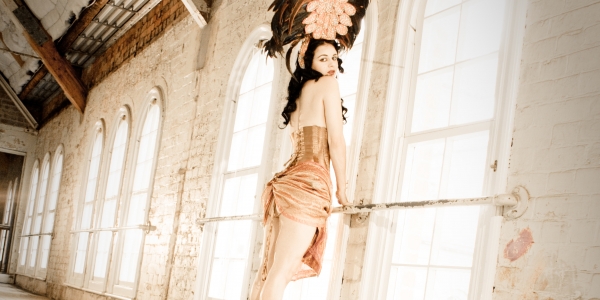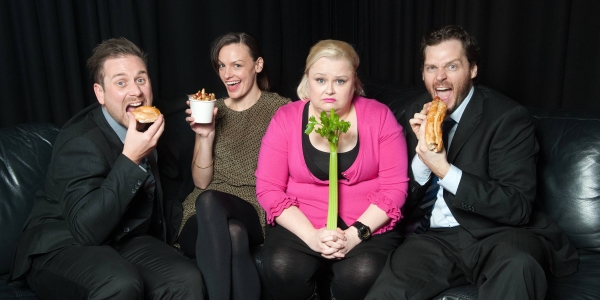“I arrived at the audition nervous and terrified then suddenly I relaxed, found I was excited but not nervous.” That audition was back in 2002. “There was no YouTube back then. The first time I saw burlesque was at a major convention, Teasearama, and it was already a little world of its own, women dressing theatrically, their stage names; it was incredibly enchanting. I started before it was the big thing,” adds the performer, who graduated from the Jacques Le Coq performance school in Paris. “I didn’t want to be a straight actress anymore; I wanted more control. Oddly enough I’d already been developing a performance cabaret piece with a fan, which was inspired by burlesque.”
Lola is performing in New Orleans Burlesque in the Wonderland Spiegeltent with other Australian dancers including Dolores Daiquiri (Melbourne), Davina Mercy (Brisbane), Vesper White (Melbourne), L’Amour (Melbourne), Tiffany Blue (Canberra), Lila Luxx (Brisbane), Sheena Miss Demeanour (Sydney), Miss Jane (Melbourne), Evie Red (Melbourne) and Elena Gabrielle (Melbourne). Dancers don’t tend to perform interstate as much as often as they did a few years ago, Lola notes, and she wants to address that. “I want to encourage a circuit kind of thing where we travel around,” she says. “It’s good to do that, better than sticking to our own cities. I’m gently shaking things up a bit,” New Orleans Burlesque is in a style of its own where audiences are encouraged to get up and dance. Going by the description of the band, the Desert Blues Cartel, who offer an experience compared to ‘stumbling drunkenly back into Weimar Berlin and a world of overt aural decadence steeped in the darkest of blues and gypsy music’, it will be damn near impossible to stay in your seat. The show is a new take on burlesque performance, with dancers improvising to live music– Desert Blues Cartel’s eccentric mix of dirty blues, gypsy, country, and jazz over-layed with pop sensibilities, rather than presenting choreographed work to recorded music as is usually the case.
In a nice piece of synchronicity that first audition in the States was for an old New Orleans show from the 1920s. Lola, who had been performing bellydance at corporate gigs, upped and took herself to the States, auditioned and life was never the same afterwards. “What was Dita like? “She was incredibly gracious and ladylike,” answers Lola. “She was wearing a beautiful gray suit and managed to look unutterably erotic, with perfect hair and a top hat. I was her favourite auditionee for that particular session.” The legend’s first words to Lola were “Are you naughty?” Too delicious. The occasion marked the beginning of Lola’s unique career as a burlesque dancer. “I knew, walking back to my hotel that I was going to do burlesque. I had a strong feeling of ambition; it surprised me how much I wanted to do that.” Seven years after first seeing burlesque at Teasearama she went back as the headline act.
Lola’s dedication to her performance art is so thorough that she’s completed a doctorate in it. A PhD in burlesque? Yes. “I’m the first person to have performed burlesque in a PhD,” she says. Her thesis is simply entitled A Burlesque, about her personal experience as a performer. “My degree is one with a creative component. I’m not writing about burlesque for everyone,” she continues. “It was enough to talk about my own story; I’d fallen in love with it so much.” Lola has been careful to distance herself from the endless debates on whether burlesque is empowering or exploitative of women. “That goes nowhere,” she observes. “People have their own opinions. The process of objectification has existed in art forms for quite a long time. Burlesque can be controversial in feminist terms but I’ve addressed it as a creative artist. You can’t just take the aesthetics of an era and read politics into it. My engagement has been to remove the politics of the past from the aesthetics of the past. It’s performance driven, not politically driven by theory. I had to find the theory to accompany the art, not the other way round. It freed my up to create my work, to engage in my creative process. It felt more dangerous.” Lola notes that there is a backlash against burlesque at the moment, despite its popularity. “Traditional burlesque is so intimately tied with its own history. It’s always been a bit topsy turvy, with women dressing as men. It’s interpreted as safe and innocuous but it’s not that simple.”
BY LIZA DEZFOULI







